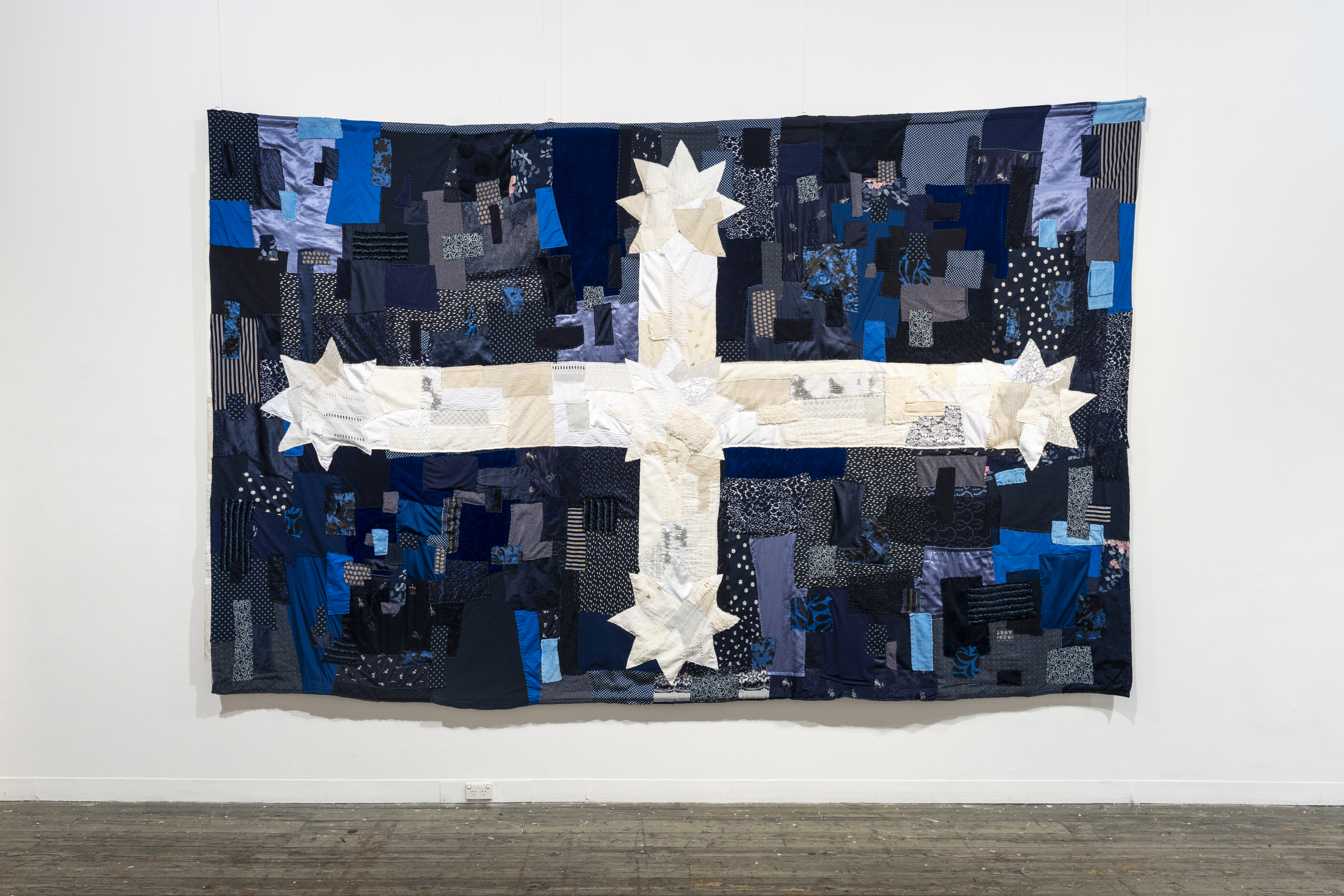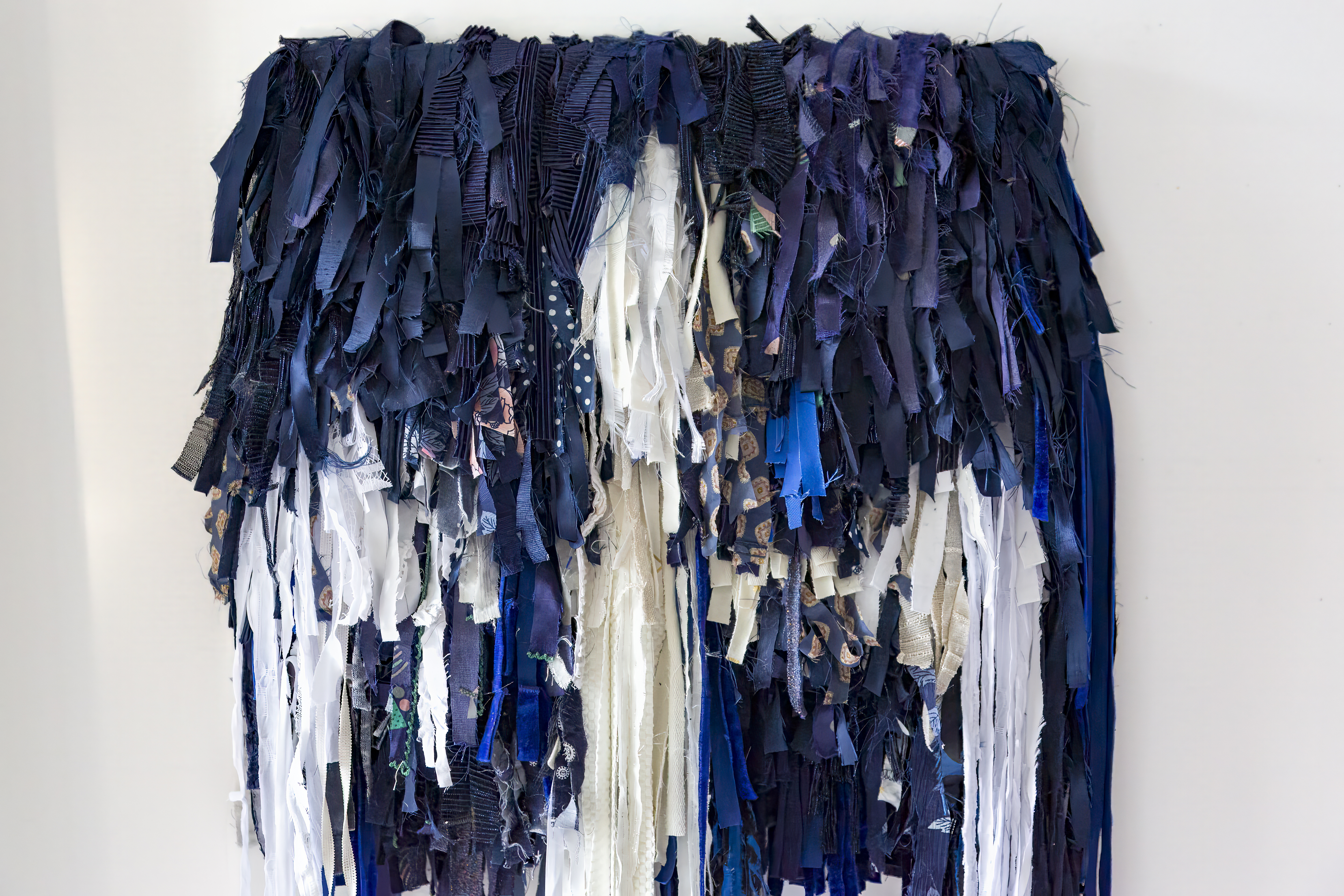

Eureka I
Elise Cakebread, 2024
400cm x 260cm
Artist Statement:
2024 began with an unsettling atmosphere here in Ballarat.
The sound of helicopters was overhead, and police tape lined the back roads into town.
A woman was missing.
Another was killed by her partner.
Then a few weeks later, another was murdered – again by her male partner.
Most of us were anxiously refreshing our news feeds hoping for an update.
Protests and vigils were held. My female friends and I started to feel unsafe.
I paused before walking down a familiar bush track. There was a sense that the whole country was watching Ballarat. What circumstances led to these horrible crimes happening here? What was going on with these young men? Was our town really that exceptional or was it just coincidence in a country where gendered violence was escalating, and the social fabric was tearing?
I kept thinking about the history the region, of the Eureka Stockade and how it is here where people fought for justice, to be treated equally and ultimately for democracy. I thought a lot about the symbol of this battle – the Eureka Flag. The Eureka Flag is arguably Australia’s most important textile work.
It was made by three women, Anastasia Duke, Anne Duke and Anastasia Withers. These women lived on the gold fields and supported the miner’s rights. Together they made a flag so oversized it is impossible to misunderstand how strongly they believed in the cause. At 2.6 x 4 metres – it is extraordinary. Pieced together from materials at hand, they sewed it together with ‘running stitch’ indicating the urgency they must have felt.
The history of gold mining in Ballarat is usually told with much pride. The miners fought against injustice and won; they instigated democracy for this country. But today the abandoned mines pock the landscape, now seen as an insidious threat. When a woman goes missing our thoughts jump to the conclusion, she has been dumped down a mineshaft and will never be found. Simultaneously, the culture of the goldfields is one founded on mateship and camaraderie amongst men. Journalist and writer Jess Hill points out, this relies on the ‘othering’ of women to reinforce and perpetuate male bonding. I certainly understood this dynamic as a young girl at school in Ballarat.
On ‘Eureka Day’ 2023 – the anniversary of the miner’s rebellion – a large group of masked men paraded down the main street of Ballarat in an unannounced and illegal protest proclaiming, “Australia for the White Man!”. In a complete misinterpretation of the ‘Eureka’ meaning, the mob flouted their banners at key Eureka sights. They posed for photos outside the police station and unlike at the actual stockade – the police just watched on impotent or stunned.
I wanted to attend the protests held in Ballarat this year – I could not bear to explain to my two young daughters that we were there to ask for violence against women to stop.
And so instead my protest has been this: I am reclaiming the Eureka Flag.
I am reclaiming it for Samantha Murphy, Rebecca Young and Hannah McGuire – the three women killed at the hands of men in Ballarat in 2024. And I am reclaiming it for the true spirit of justice and equality that it represents.
My flag is made from the clothing of Ballarat women, donated and found, it is made from my own clothing, my daughters clothing, the clothing of friends – infusing it with the personal and communal memories of women living in Victoria’s goldfields region.
It is made from silk, satin, sequins, lurex, lace, velvet – the fabrics shimmer with life.
I stitched it by hand – running stitch – making it felt urgent. And it still does.


Eureka II
Elise Cakebread, 2024
 Photography by Astrid Mulder and Michael Quinlan.
Photography by Astrid Mulder and Michael Quinlan.